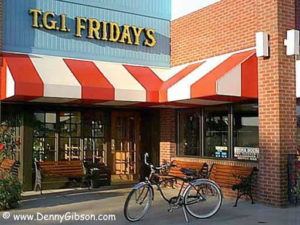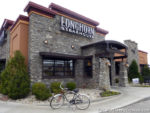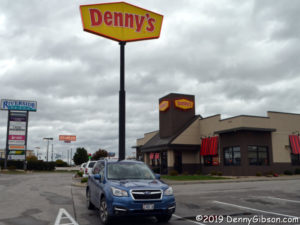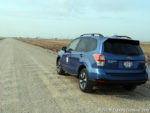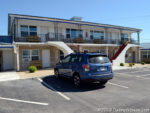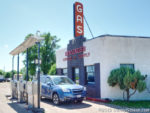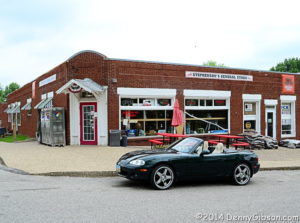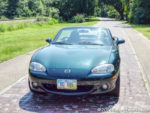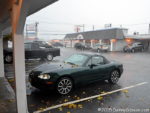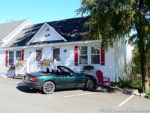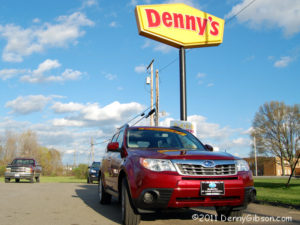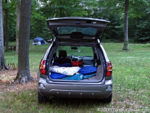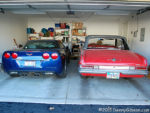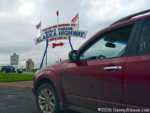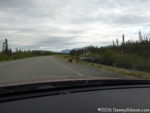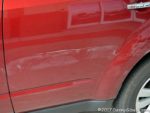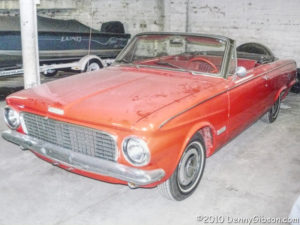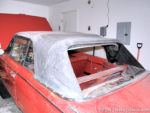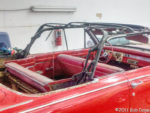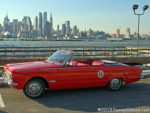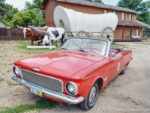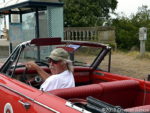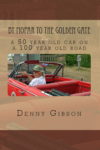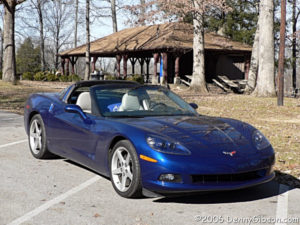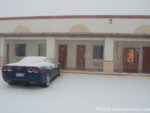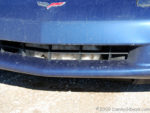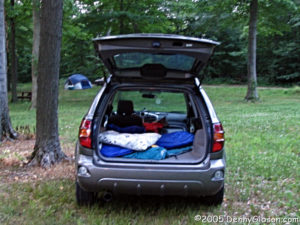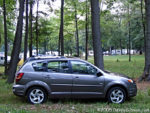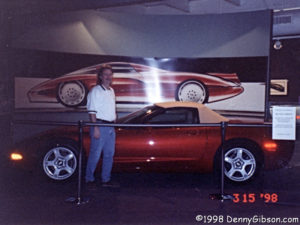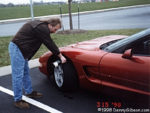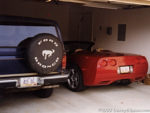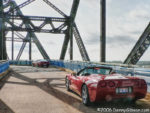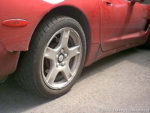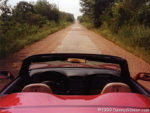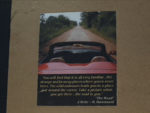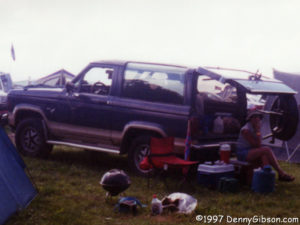 This series has reached a pause. Even though the forty vehicles I’ve owned to date have all been covered, I don’t think that the My Wheels series is truly at an end. I suspect I’ll buy something else someday. It does, however, seem like a good time for a look back and a bit of a summary. Because of a goof in sequencing, the earliest and most recent chapters both featured bicycles. They are the only two bicycles in the series although I actually owned a couple of used bicycles prior to purchasing the J.C.Higgins. In between were five motorcycles, one truck, and thirty-two automobiles. The autos varied greatly in details, but all had four wheels as did the truck. Therefore, the current count of wheels in My Wheels is 146.
This series has reached a pause. Even though the forty vehicles I’ve owned to date have all been covered, I don’t think that the My Wheels series is truly at an end. I suspect I’ll buy something else someday. It does, however, seem like a good time for a look back and a bit of a summary. Because of a goof in sequencing, the earliest and most recent chapters both featured bicycles. They are the only two bicycles in the series although I actually owned a couple of used bicycles prior to purchasing the J.C.Higgins. In between were five motorcycles, one truck, and thirty-two automobiles. The autos varied greatly in details, but all had four wheels as did the truck. Therefore, the current count of wheels in My Wheels is 146.
Despite being separated by nearly forty years, there was only one significant difference, other than color, between the two bicycles. The 1997 Schwinn has seven gears; The 1960 Higgins just one.
The motorcycles varied quite a bit for the small sample size. Three came from Japan, one from Germany, and one from the U.S.A. Three had chains, one a driveshaft, and one was belt-driven (with pedals). There were two inline twins, one boxer twin, and two single-cylinder models. There was even one 2-cycle in the mix. Color-wise there were two reds, one maroon, one black, and one blue. Each came from a different manufacturer: Whizzer, Honda, Suzuki, BMW, Yahama.
The lone truck was a gray Chevy van. Powered by a V8 with an automatic transmission, its crude self-made camper like interior held as many people as could tolerate sitting on the floor or the bed.
I’ve applied all the same grouping to the autos as I did with the motorcycles plus a couple of additions. I haven’t overrefined things. For country, I’ve used the country where the manufacturer is headquartered which might not be where the specific car was built. For capacity, I started with the idea of calling everything either 4 or 2 passenger even though some of the older cars with bench seats routinely handled 5 or 6 but quickly realized that I was really just dividing them on whether or not they had a rear seat. I also simplified body style categories. I did not distinguish between SUVs, station wagons, hatchbacks. or any more subtle variations. Anything with a top that folded or was removable is a convertible. Any fixed-roof car with a trunk and usable rear seat is a hardtop. With neither trunk or usable rear seat, it’s a coupe and with a rear seat but no trunk it’s a wagon. Yes, whether or not a rear seat is usable is a matter of opinion and in my opinion, the rear seats in ’94 Camaros and GEO Storms of any year are not generally usable.
Here’s the breakdown starting with characteristics having the fewest variations. There were 27 cars with rear seats and 5 without. 20 cars had four doors and 12 had two. 29 cars had their engine in the front while 3 were rear-engined. 22 cars were driven by the rear wheels, 7 by the front wheels, and 3 by all four.
Style
15 Hardtop
7 Convertible
6 Wagon
4 Coupe
Color
12 Blue
5 Red
4 Green
4 Gray
3 White
2 Black
1 Brown
1 Yellow
Engine (I=inline, F-flat, R=rotary)
9 V8
9 I4
6 I6
3 V6
2 F4
2 F6
1 R
Transmission (A=automatic, M=manual, CV=continously variable)
7 3A
6 3M
6 4M
6 5M
3 4A
2 6M
1 2A
1 CV
Make
13 Chevrolet
3 Ford
2 Dodge
2 Mazda
2 Plymouth
2 Renault
2 Subaru
1 Acura
1 Audi
1 Austin-Healey
1 Buick
1 Mercury
1 Opel
Country
22 USA
5 Japan
2 France
2 Germany
1 England
There have been more Chevys than anything else. The most common color has been blue. Based on history, my ideal car must be a blue rear-wheel-drive Chevy two-door hardtop with a V8 and automatic. There is exactly one car on the list that meets those specs. It’s the 1970 Chevelle castoff by my former mother-in-law that I owned for less than a year. I’d not thought of it as ideal when I owned it and I’m not buying into that now.
The blue Chevelle was, like so many I’ve owned, simply a car that was available and affordable when I needed one. The only exceptions are the two vehicles I ordered from the factory. All the others were either used or sitting on a lot after being built to someone else’s specifications. That those two built-to-order rides are almost as different from each other as possible is pretty good proof that there is no single ideal vehicle for most people. Ideals change.
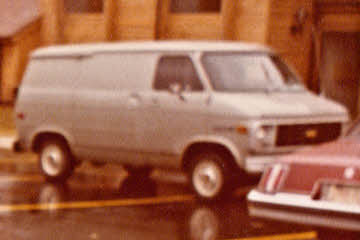 The first vehicle I custom ordered was the 1979 truck. I was in my early thirties and my boys, although they did not live with me at the time, were eight and ten. I and several friends were into camping and that was the van’s purpose. It was fairly well-optioned in some respects. I checked off A/C, cruise, etc, but no interior options including radio. I installed my own sound system, replaced the single cargo van seat with a pair of captain’s chairs, and built out the empty space for camping.
The first vehicle I custom ordered was the 1979 truck. I was in my early thirties and my boys, although they did not live with me at the time, were eight and ten. I and several friends were into camping and that was the van’s purpose. It was fairly well-optioned in some respects. I checked off A/C, cruise, etc, but no interior options including radio. I installed my own sound system, replaced the single cargo van seat with a pair of captain’s chairs, and built out the empty space for camping.
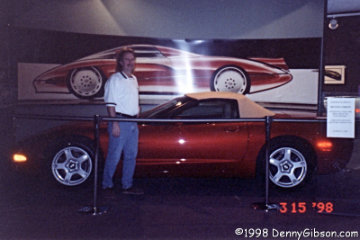 It would be nearly twenty years before I’d fill out another order sheet. By then, the kids were grown and gone and I had moved from a four-bedroom house to a two-bedroom condo. The 1998 Corvette reflected that. I sprung for a convertible, 6-speed manual transmission (auto was standard), Z51 suspension, and upgraded sound and climate control systems. The van and the ‘Vette were both Chevys but their option lists looked nothing alike.
It would be nearly twenty years before I’d fill out another order sheet. By then, the kids were grown and gone and I had moved from a four-bedroom house to a two-bedroom condo. The 1998 Corvette reflected that. I sprung for a convertible, 6-speed manual transmission (auto was standard), Z51 suspension, and upgraded sound and climate control systems. The van and the ‘Vette were both Chevys but their option lists looked nothing alike.
So this will be the last My Wheels chapter until a new vehicle comes along. It’s a series that isn’t published often (These forty-one chapters were spread over more than seven years.) so maybe that will happen before you even notice the pause but I think it’s going to be a while.
My Wheel chapters can be seen in total here or individually through the following links:
Chapter 1 1960 J. C. Higgins Flightliner
Chapter 2 1948/9 Whizzer
Chapter 3 1953 Chevrolet
Chapter 4 1954 Mercury
Chapter 5 1952 Ford
Chapter 6 1959 Chevrolet
Chapter 7 1961 Renault 4CV
Chapter 8 1957 Austin Healey
Chapter 9 Honda 65
Chapter 10 1964 Corvair
Chapter 11 1967 Dodge
Chapter 12 1961 Falcon
Chapter 13 1966 Suzuki
Chapter 14 1965 Barracuda
Chapter 15 1969 Opel Kadett
Chapter 16 1962 Chevy II
Chapter 17 1965 Corvair
Chapter 18 1971 Vega
Chapter 19 1970 Chevrolet Nova
Chapter 20 1972 Audi 100 LS
Chapter 21 1979 Chevrolet G10
Chapter 22 1970 Chevelle
Chapter 23 1972 BMW R75
Chapter 24 1983 Renault Alliance
Chapter 25 1985 Buick Century
Chapter 26 1986 Acura Legend
Chapter 27 1985 Mazda RX7
Chapter 28 1978? Yamaha 400
Chapter 29 1991 Geo Storm
Chapter 30 1992 Chevrolet Lumina
Chapter 31 1994 Chevrolet Camaro
Chapter 32 1986 Ford Bronco II
Chapter 33 1998 Chevrolet Corvette
Chapter 34 2003 Pontiac Vibe
Chapter 35 2006 Chevrolet Corvette
Chapter 36 1963 Plymouth Valiant
Chapter 37 2011 Subaru Forester
Chapter 38 2003 Mazda Miata
Chapter 39 2018 Subaru Forester
Chapter 40 1997 Schwinn

